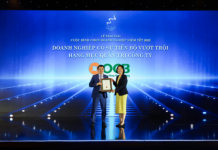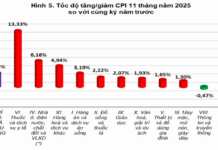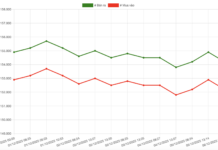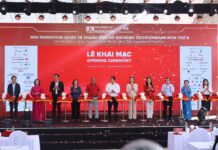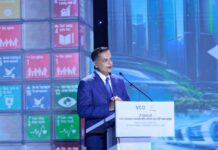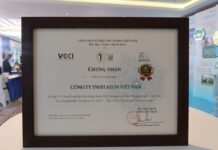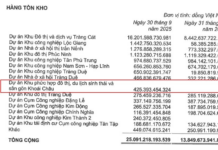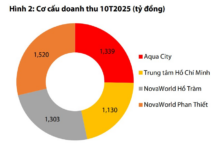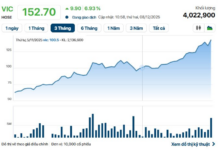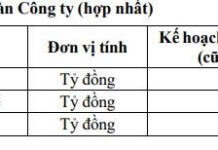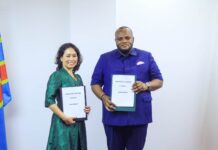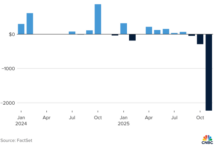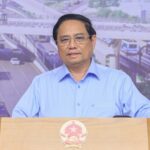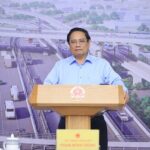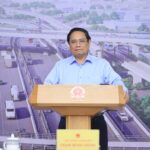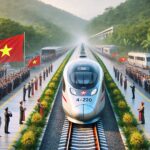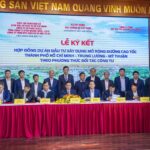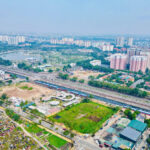Following the feedback from businesses at the meeting of the Government’s Standing Committee with enterprises on solutions to contribute to the country’s socio-economic development on September 21, Minister of Transport Nguyen Van Thang stated that according to the strategic plan, in the three sectors of roads, aviation, and waterways, Vietnam needs approximately over VND 2 million billion. From 2021 to the present, the National Assembly, the Government, and the Prime Minister have allocated more than VND 100 thousand billion to implement the construction of large and very large projects in all fields, with a focus on expressways.
HUGE CAPITAL NEEDS, REQUIRING PRIVATE SECTOR INVOLVEMENT
“Currently, we have over 1,000 km of expressways, and it is expected that by 2025, we will have another 1,000 km of expressways, and by 2030, we will have about 5,000 km of expressways. This can be said to be a huge resource that the Party and the State have allocated for the development of transport infrastructure,” emphasized Minister of Transport Nguyen Van Thang.
However, by 2030, the demand for transport development is expected to be very high. Excluding the railway sector and the high-speed railway project, more than VND 2 million billion is required, of which the state budget is expected to contribute more than VND 1 million billion, and the remaining VND 1 million billion will have to be mobilized from socialization sources, including enterprises. If the high-speed railway and standard railway projects are taken into account, an additional VND 3 million billion will be needed. The high-speed railway alone requires more than VND 1.7 million billion.
Therefore, a significant amount of socialization capital is needed. As a result, the Minister of Transport emphasized the desire to continue receiving investment interest in developing the transport infrastructure sector.
Regarding roads, the Road Law has been promulgated, and in the future, the Ministry of Transport will coordinate with ministries and sectors to implement bidding for toll collection on all expressways that the state has invested in. This is a great opportunity for businesses to participate.
In addition, there are many transport projects that can be implemented under the Build-Operate-Transfer (BOT) model. The Ministry of Transport hopes that enterprises will continue to invest in construction and participate in projects under the BOT model. To achieve this, in the future, the Government will also have many mechanisms and policies and will submit to the National Assembly policies that create favorable conditions for enterprises.
Regarding railways, currently, in addition to the high-speed railway, there are many railway projects with mixed-use and urban railway standards. According to calculations by the Ministry of Transport, railway projects alone will create about USD 75.6 billion for the construction market and over USD 34 billion for the manufacturing market. As for the issues related to equipment for the 250km/h and 350km/h high-speed railway, there are basically no significant differences.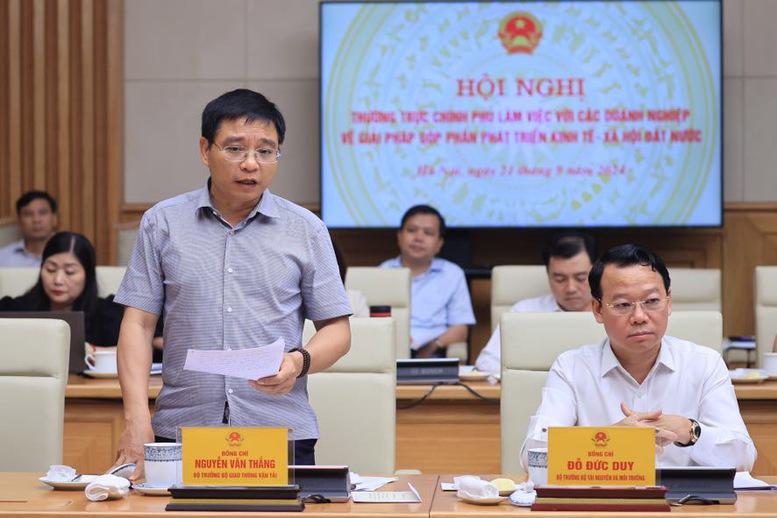
In response to the locality’s proposal regarding port planning, Minister of Transport Nguyen Van Thang stated that the Prime Minister had approved two planning schemes: the group of port planning and the detailed planning. Currently, the Ministry of Transport has been working on these two planning schemes simultaneously.
Regarding the group of port planning, the Ministry of Transport has submitted it to the Prime Minister, and the Deputy Prime Minister in charge has held a meeting to consider it. On September 5, 2024, there was a communication about this content. It is expected that the port planning will be completed and ready for implementation this September…
TRANSFER OF 56% OF ADMINISTRATIVE PROCEDURES TO LOCAL AUTHORITIES
At the conference, Minister of Natural Resources and Environment Do Duc Duy discussed several issues related to land, the environment, and minerals that were proposed by enterprises.
Regarding land, Minister of Natural Resources and Environment Do Duc Duy shared that today’s conference was held after more than a month of implementing the new Land Law, which includes many changes compared to the 2013 Land Law. Many of the enterprises’ proposals have been updated, adjusted, and supplemented in the new Land Law and its guiding decrees.
Regarding the enterprises’ difficulties in developing industrial parks, especially the land-use indicators for agricultural land or other purposes, Mr. Do Duc Duy stated that the Land Law has regulated land-use objectives according to provincial planning. On September 20, the Ministry sent documents to the provinces and centrally-run cities, requesting them to implement them according to the Land Law and its guiding decrees.
Concerning Sun Group’s proposal related to land allocation based on site clearance progress and land price calculation at the time of land allocation, the Minister of Natural Resources and Environment affirmed that the Land Law and its guiding decrees have regulated this correctly. Land is allocated according to the progress of site clearance, and the land price is determined at the time of land allocation.
The Law and guiding decrees on handling transitional cases have also stated that if land is allocated from January 1, 2005 (the effective date of the 2003 Land Law) to present without land use levy payment, the time to determine the land use levy will also be determined from the time of land allocation.

For land used for mixed-use purposes, there are specific regulations to calculate the land use levy according to the type of mixed-use land, such as Sun Group’s projects for tourism development.
Regarding Gleximco’s proposal on land allocation to strategic investors for large-scale project implementation, the Ministry of Natural Resources and Environment fully agrees with adjusting the regulations on bidding. The Prime Minister has assigned the Ministry of Planning and Investment to study and select strategic investors through direct appointment without bidding.
Also related to Gleximco’s proposal on one-time or 50-year land use levy payment for apartment buildings, according to the Ministry of Natural Resources and Environment, the National Assembly has decided that the ownership form of apartment buildings is long-term. Therefore, long-term ownership requires long-term land use, and the land use levy must be paid for residential land. In the case of constructing apartments for lease, the land type is commercial service land. In this case, according to the Land Law, investors can choose to pay the land use levy once for the entire lease period or annually.
Regarding the environment, investors also proposed administrative reforms. The Minister of Natural Resources and Environment stated that the Ministry had proposed amending Decree 08 on Environmental Protection, resulting in an 11% reduction in environmental procedures, meaning they do not need to be implemented. Additionally, 56% of the procedures that used to be under the Ministry’s authority have been transferred to local authorities.
Concerning minerals, previously, enterprises were allowed to exploit mines, and when the exploitation ended, they were responsible for mine closure. However, according to the Mineral Law 2010 and Decree 158 of 2016, to complete mine closure, enterprises must fulfill their financial obligations to the State. This has caused difficulties for the Quy Sa mine and may also affect the Thach Khe mine.
Therefore, according to the Prime Minister’s directions, next week, the Ministry of Natural Resources and Environment will coordinate with the Ministry of Finance to propose to the Government that mine closure should still be implemented, and financial obligations will be included in the decision approving the mine closure scheme. The Minister of Natural Resources and Environment stated that this issue could be resolved for both the Quy Sa and Thach Khe mines.
Also at the conference, Deputy Minister of Planning and Investment Tran Quoc Phuong stated that the Ministry of Planning and Investment would take on board the enterprises’ proposals and link them to the process of perfecting the regulations related to the Ministry of Planning and Investment. In addition to listening to the enterprises’ opinions, the Ministry of Planning and Investment also proposed that enterprises should unite and develop together to contribute to the country.
‘Beating the Sun and Rain, Unfazed by Wind and Storm’: Achieving the 3,000-km Expressway Goal
The Prime Minister has urged the Ministry of Transport and local authorities to continue embracing the spirit of “surmounting the sun and conquering the rain, never losing to the wind and storms”. By being proactive in dealing with adverse weather conditions, they aim to complete 3,000 kilometers of expressways by 2025.
Breakfast in Hanoi, Lunch in Ho Chi Minh City: A $70 Billion Dream for a 350km/h Railway
“The time is ripe for high-speed rail investment, given Vietnam’s current standing and potential,” asserted Nguyen Danh Huy, Deputy Minister of Transport.






